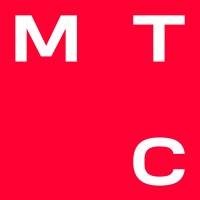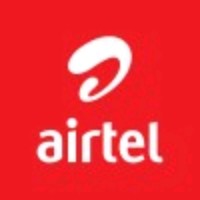
MTS Group Company Cyber Security Posture
mts.ruMobile TeleSystems OJSC ("MTS") is the leading telecommunications group in Russia, Eastern Europe and Central Asia, offering mobile and fixed voice, broadband, pay TV as well as content and entertainment services in one of the world's fastest growing regions. Including its subsidiaries, as of December 31, 2010, the Group serviced over 108.1 million mobile subscribers in Russia, Ukraine, Uzbekistan, Turkmenistan, Armenia and Belarus, a region that boasts a total population of more than 230 million. The Group’s fixed business, as of December 31, 2010, had a total of 9.9 million households passed, 1.8 million broadband Internet and 2.6 million pay-TV subscribers. MTS has been listed on the New York Stock Exchange since July 2000 and trades under the ticker MBT. The Company’s shares have been listed locally on Moscow Interbank Currency Exchange (MICEX) since November 2003 under the symbol MTSI. The free float of the Company’s shares is approximately 49.2%. MTS is 50.8% majority-owned by Sistema, the largest public diversified financial corporation in Russia and the CIS. In 2010, MTS' revenues reached $11.3 billion. According to GSM Association Wireless Intelligence Information Service, MTS ranks as the 2nd largest operator in Europe by proportionate subscriptions at the end of 2010..
MTS Group Company Details
mts-group
10,001+ employees
0
517
Telecommunications
mts.ru
Scan still pending
MTS_2668904
In-progress
Between 900 and 1000
This score is AI-generated and less favored by cyber insurers, who prefer the TPRM score.
 MTS Group Global Score
MTS Group Global Score.png)

MTS Group Company Scoring based on AI Models
| Model Name | Date | Description | Current Score Difference | Score |
|---|---|---|---|---|
| AVERAGE-Industry | 03-12-2025 | This score represents the average cybersecurity rating of companies already scanned within the same industry. It provides a benchmark to compare an individual company's security posture against its industry peers. | N/A | Between 900 and 1000 |
MTS Group Company Cyber Security News & History
| Entity | Type | Severity | Impact | Seen | Url ID | Details | View |
|---|
MTS Group Company Subsidiaries

Mobile TeleSystems OJSC ("MTS") is the leading telecommunications group in Russia, Eastern Europe and Central Asia, offering mobile and fixed voice, broadband, pay TV as well as content and entertainment services in one of the world's fastest growing regions. Including its subsidiaries, as of December 31, 2010, the Group serviced over 108.1 million mobile subscribers in Russia, Ukraine, Uzbekistan, Turkmenistan, Armenia and Belarus, a region that boasts a total population of more than 230 million. The Group’s fixed business, as of December 31, 2010, had a total of 9.9 million households passed, 1.8 million broadband Internet and 2.6 million pay-TV subscribers. MTS has been listed on the New York Stock Exchange since July 2000 and trades under the ticker MBT. The Company’s shares have been listed locally on Moscow Interbank Currency Exchange (MICEX) since November 2003 under the symbol MTSI. The free float of the Company’s shares is approximately 49.2%. MTS is 50.8% majority-owned by Sistema, the largest public diversified financial corporation in Russia and the CIS. In 2010, MTS' revenues reached $11.3 billion. According to GSM Association Wireless Intelligence Information Service, MTS ranks as the 2nd largest operator in Europe by proportionate subscriptions at the end of 2010..
Access Data Using Our API

Get company history
.png)
MTS Group Cyber Security News
Maritime Needs Decisive Action on Cyber Risk Says ABS Consulting Cyber Expert
“The importance of a robust cybersecurity approach cannot be overstated,” said DeVolld. “Cybercriminals are constantly evolving their tactics to ...
GAO calls on Coast Guard to improve cyber for Maritime Transportation System
WASHINGTON — The Government Accountability Office released a report today calling for the US Coast Guard to improve the cybersecurity ...
Cyber Risks to the Maritime Transportation System (MTS): Interview with Tina Won Sherman, Director of the Homeland Security and Justice Team at GAO HS Today
Homeland Security Today's Executive Editor, Kristina Tanasichuk, sat down with Tina Won Sherman, Director of the Homeland Security and ...
Sea Change in Cybersecurity: USCG's New Maritime Reg Set to Transform Digital Safety at Sea
The $5.4 trillion global maritime industry faces a perfect storm of cyber vulnerabilities, and a new government regulation aims to be the ...
Airtel Africa-MTN Group Network Agreement, Bell Launches Security-as-a-Service, MTS B2B Service
MTN Group and Airtel Africa have entered into agreements to share network infrastructure in Uganda and Nigeria while complying with local ...
Booz Allen Hamilton Sells Managed Threat Services (MTS) Business to Security On-Demand
MTS and Security On-Demand will operate as one unified organization and brand known as DeepSeas.
Cyber threats to watch out for in the Marine Transportation System
“The consequences of a cyber attack on the port infrastructure extend far beyond financial losses. Disruptions to the supply chain can have ...
New DHS report highlights gaps in cybersecurity efforts of Coast Guard for marine transportation systems
New DHS report highlights gaps in cybersecurity efforts of Coast Guard for marine transportation systems.
Outlining Critical MTS Cybersecurity Requirements
This article I co-authored with Andy Lee for MarineLink highlights the implications of the rule on the maritime transportation system. We ...

MTS Group Similar Companies

Globe Telecom
Globe is a leading full-service telecommunications company in the Philippines and publicly listed in the PSE with the stock symbol GLO. The company serves the telecommunications and technology needs of consumers and businesses across an entire suite of products and services including mobile, fixed,

Jazz
Pakistan’s number one digital operator and the largest internet and broadband service provider with over 70 million subscribers nationwide. With a legacy of more than 27 years, Jazz maintains market leadership through cutting-edge, integrated technology, the strongest brands and the largest portfoli

airtel
Airtel was founded to provide global connectivity and unlock endless opportunities. Our organization embodies a unique blend of energy, innovation, creativity, dedication, scale, and ownership, all aimed at being limitless. At Airtel, we strive to go beyond our duties to create impactful solutions f

Totalplay
Somos una empresa orgullosamente mexicana, líder en tecnología, telecomunicaciones y entretenimiento. Estamos siempre a la vanguardia con el objetivo de llevar a nuestros clientes lo mejor en conectividad, ya sea para que estén cerca de los que más quieren ó puedan alcanzar el éxito profesion

Airtel Africa
Airtel Africa is a leading provider of telecommunications and mobile money services, with a presence in 14 countries in Africa, primarily in East Africa and Central and West Africa. Airtel Africa offers an integrated suite of telecommunications solutions to its subscribers, including mobile voice a

e& UAE
(Formerly etisalat UAE) For more than four decades, we have connected people and now we’ve evolved to become the digital telco of the future. Our mission is to grow, transform and excel as the region’s technology leader while enhancing digital customer experience and operation agility. e& UAE

Frequently Asked Questions (FAQ) on Cybersecurity Incidents
MTS Group CyberSecurity History Information
Total Incidents: According to Rankiteo, MTS Group has faced 0 incidents in the past.
Incident Types: As of the current reporting period, MTS Group has not encountered any cybersecurity incidents.
Total Financial Loss: The total financial loss from these incidents is estimated to be {total_financial_loss}.
Cybersecurity Posture: The company's overall cybersecurity posture is described as Mobile TeleSystems OJSC ("MTS") is the leading telecommunications group in Russia, Eastern Europe and Central Asia, offering mobile and fixed voice, broadband, pay TV as well as content and entertainment services in one of the world's fastest growing regions. Including its subsidiaries, as of December 31, 2010, the Group serviced over 108.1 million mobile subscribers in Russia, Ukraine, Uzbekistan, Turkmenistan, Armenia and Belarus, a region that boasts a total population of more than 230 million. The Group’s fixed business, as of December 31, 2010, had a total of 9.9 million households passed, 1.8 million broadband Internet and 2.6 million pay-TV subscribers. MTS has been listed on the New York Stock Exchange since July 2000 and trades under the ticker MBT. The Company’s shares have been listed locally on Moscow Interbank Currency Exchange (MICEX) since November 2003 under the symbol MTSI. The free float of the Company’s shares is approximately 49.2%. MTS is 50.8% majority-owned by Sistema, the largest public diversified financial corporation in Russia and the CIS. In 2010, MTS' revenues reached $11.3 billion. According to GSM Association Wireless Intelligence Information Service, MTS ranks as the 2nd largest operator in Europe by proportionate subscriptions at the end of 2010...
Detection and Response: The company detects and responds to cybersecurity incidents through {description_of_detection_and_response_process}.
Incident Details
Incident 1: Ransomware Attack
Title: {Incident_Title}
Description: {Brief_description_of_the_incident}
Date Detected: {Detection_Date}
Date Publicly Disclosed: {Disclosure_Date}
Date Resolved: {Resolution_Date}
Type: {Type_of_Attack}
Attack Vector: {Attack_Vector}
Vulnerability Exploited: {Vulnerability}
Threat Actor: {Threat_Actor}
Motivation: {Motivation}
Incident 2: Data Breach
Title: {Incident_Title}
Description: {Brief_description_of_the_incident}
Date Detected: {Detection_Date}
Date Publicly Disclosed: {Disclosure_Date}
Date Resolved: {Resolution_Date}
Type: {Type_of_Attack}
Attack Vector: {Attack_Vector}
Vulnerability Exploited: {Vulnerability}
Threat Actor: {Threat_Actor}
Motivation: {Motivation}
Common Attack Types: As of now, the company has not encountered any reported incidents involving common cyberattacks.
Identification of Attack Vectors: The company identifies the attack vectors used in incidents through {description_of_identification_process}.
Impact of the Incidents
Incident 1: Ransomware Attack
Financial Loss: {Financial_Loss}
Data Compromised: {Data_Compromised}
Systems Affected: {Systems_Affected}
Downtime: {Downtime}
Operational Impact: {Operational_Impact}
Conversion Rate Impact: {Conversion_Rate_Impact}
Revenue Loss: {Revenue_Loss}
Customer Complaints: {Customer_Complaints}
Brand Reputation Impact: {Brand_Reputation_Impact}
Legal Liabilities: {Legal_Liabilities}
Identity Theft Risk: {Identity_Theft_Risk}
Payment Information Risk: {Payment_Information_Risk}
Incident 2: Data Breach
Financial Loss: {Financial_Loss}
Data Compromised: {Data_Compromised}
Systems Affected: {Systems_Affected}
Downtime: {Downtime}
Operational Impact: {Operational_Impact}
Conversion Rate Impact: {Conversion_Rate_Impact}
Revenue Loss: {Revenue_Loss}
Customer Complaints: {Customer_Complaints}
Brand Reputation Impact: {Brand_Reputation_Impact}
Legal Liabilities: {Legal_Liabilities}
Identity Theft Risk: {Identity_Theft_Risk}
Payment Information Risk: {Payment_Information_Risk}
Average Financial Loss: The average financial loss per incident is {average_financial_loss}.
Commonly Compromised Data Types: The types of data most commonly compromised in incidents are {list_of_commonly_compromised_data_types}.
Incident 1: Ransomware Attack
Entity Name: {Entity_Name}
Entity Type: {Entity_Type}
Industry: {Industry}
Location: {Location}
Size: {Size}
Customers Affected: {Customers_Affected}
Incident 2: Data Breach
Entity Name: {Entity_Name}
Entity Type: {Entity_Type}
Industry: {Industry}
Location: {Location}
Size: {Size}
Customers Affected: {Customers_Affected}
Response to the Incidents
Incident 1: Ransomware Attack
Incident Response Plan Activated: {Yes/No}
Third Party Assistance: {Yes/No}
Law Enforcement Notified: {Yes/No}
Containment Measures: {Containment_Measures}
Remediation Measures: {Remediation_Measures}
Recovery Measures: {Recovery_Measures}
Communication Strategy: {Communication_Strategy}
Adaptive Behavioral WAF: {Adaptive_Behavioral_WAF}
On-Demand Scrubbing Services: {On_Demand_Scrubbing_Services}
Network Segmentation: {Network_Segmentation}
Enhanced Monitoring: {Enhanced_Monitoring}
Incident 2: Data Breach
Incident Response Plan Activated: {Yes/No}
Third Party Assistance: {Yes/No}
Law Enforcement Notified: {Yes/No}
Containment Measures: {Containment_Measures}
Remediation Measures: {Remediation_Measures}
Recovery Measures: {Recovery_Measures}
Communication Strategy: {Communication_Strategy}
Adaptive Behavioral WAF: {Adaptive_Behavioral_WAF}
On-Demand Scrubbing Services: {On_Demand_Scrubbing_Services}
Network Segmentation: {Network_Segmentation}
Enhanced Monitoring: {Enhanced_Monitoring}
Incident Response Plan: The company's incident response plan is described as {description_of_incident_response_plan}.
Third-Party Assistance: The company involves third-party assistance in incident response through {description_of_third_party_involvement}.
Data Breach Information
Incident 2: Data Breach
Type of Data Compromised: {Type_of_Data}
Number of Records Exposed: {Number_of_Records}
Sensitivity of Data: {Sensitivity_of_Data}
Data Exfiltration: {Yes/No}
Data Encryption: {Yes/No}
File Types Exposed: {File_Types}
Personally Identifiable Information: {Yes/No}
Prevention of Data Exfiltration: The company takes the following measures to prevent data exfiltration: {description_of_prevention_measures}.
Handling of PII Incidents: The company handles incidents involving personally identifiable information (PII) through {description_of_handling_process}.
Ransomware Information
Incident 1: Ransomware Attack
Ransom Demanded: {Ransom_Amount}
Ransom Paid: {Ransom_Paid}
Ransomware Strain: {Ransomware_Strain}
Data Encryption: {Yes/No}
Data Exfiltration: {Yes/No}
Ransom Payment Policy: The company's policy on paying ransoms in ransomware incidents is described as {description_of_ransom_payment_policy}.
Data Recovery from Ransomware: The company recovers data encrypted by ransomware through {description_of_data_recovery_process}.
Regulatory Compliance
Incident 1: Ransomware Attack
Regulations Violated: {Regulations_Violated}
Fines Imposed: {Fines_Imposed}
Legal Actions: {Legal_Actions}
Regulatory Notifications: {Regulatory_Notifications}
Incident 2: Data Breach
Regulations Violated: {Regulations_Violated}
Fines Imposed: {Fines_Imposed}
Legal Actions: {Legal_Actions}
Regulatory Notifications: {Regulatory_Notifications}
Regulatory Frameworks: The company complies with the following regulatory frameworks regarding cybersecurity: {list_of_regulatory_frameworks}.
Ensuring Regulatory Compliance: The company ensures compliance with regulatory requirements through {description_of_compliance_measures}.
Lessons Learned and Recommendations
Incident 1: Ransomware Attack
Lessons Learned: {Lessons_Learned}
Incident 2: Data Breach
Lessons Learned: {Lessons_Learned}
Incident 1: Ransomware Attack
Recommendations: {Recommendations}
Incident 2: Data Breach
Recommendations: {Recommendations}
Key Lessons Learned: The key lessons learned from past incidents are {list_of_key_lessons_learned}.
Implemented Recommendations: The company has implemented the following recommendations to improve cybersecurity: {list_of_implemented_recommendations}.
References
Additional Resources: Stakeholders can find additional resources on cybersecurity best practices at {list_of_additional_resources}.
Investigation Status
Incident 1: Ransomware Attack
Investigation Status: {Investigation_Status}
Incident 2: Data Breach
Investigation Status: {Investigation_Status}
Communication of Investigation Status: The company communicates the status of incident investigations to stakeholders through {description_of_communication_process}.
Stakeholder and Customer Advisories
Incident 1: Ransomware Attack
Stakeholder Advisories: {Stakeholder_Advisories}
Customer Advisories: {Customer_Advisories}
Incident 2: Data Breach
Stakeholder Advisories: {Stakeholder_Advisories}
Customer Advisories: {Customer_Advisories}
Advisories Provided: The company provides the following advisories to stakeholders and customers following an incident: {description_of_advisories_provided}.
Initial Access Broker
Incident 1: Ransomware Attack
Entry Point: {Entry_Point}
Reconnaissance Period: {Reconnaissance_Period}
Backdoors Established: {Backdoors_Established}
High Value Targets: {High_Value_Targets}
Data Sold on Dark Web: {Yes/No}
Incident 2: Data Breach
Entry Point: {Entry_Point}
Reconnaissance Period: {Reconnaissance_Period}
Backdoors Established: {Backdoors_Established}
High Value Targets: {High_Value_Targets}
Data Sold on Dark Web: {Yes/No}
Monitoring and Mitigation of Initial Access Brokers: The company monitors and mitigates the activities of initial access brokers through {description_of_monitoring_and_mitigation_measures}.
Post-Incident Analysis
Incident 1: Ransomware Attack
Root Causes: {Root_Causes}
Corrective Actions: {Corrective_Actions}
Incident 2: Data Breach
Root Causes: {Root_Causes}
Corrective Actions: {Corrective_Actions}
Post-Incident Analysis Process: The company's process for conducting post-incident analysis is described as {description_of_post_incident_analysis_process}.
Corrective Actions Taken: The company has taken the following corrective actions based on post-incident analysis: {list_of_corrective_actions_taken}.
Additional Questions
General Information
Ransom Payment History: The company has {paid/not_paid} ransoms in the past.
Last Ransom Demanded: The amount of the last ransom demanded was {last_ransom_amount}.
Last Attacking Group: The attacking group in the last incident was {last_attacking_group}.
Incident Details
Most Recent Incident Detected: The most recent incident detected was on {most_recent_incident_detected_date}.
Most Recent Incident Publicly Disclosed: The most recent incident publicly disclosed was on {most_recent_incident_publicly_disclosed_date}.
Most Recent Incident Resolved: The most recent incident resolved was on {most_recent_incident_resolved_date}.
Impact of the Incidents
Highest Financial Loss: The highest financial loss from an incident was {highest_financial_loss}.
Most Significant Data Compromised: The most significant data compromised in an incident was {most_significant_data_compromised}.
Most Significant System Affected: The most significant system affected in an incident was {most_significant_system_affected}.
Response to the Incidents
Third-Party Assistance in Most Recent Incident: The third-party assistance involved in the most recent incident was {third_party_assistance_in_most_recent_incident}.
Containment Measures in Most Recent Incident: The containment measures taken in the most recent incident were {containment_measures_in_most_recent_incident}.
Data Breach Information
Most Sensitive Data Compromised: The most sensitive data compromised in a breach was {most_sensitive_data_compromised}.
Number of Records Exposed: The number of records exposed in the most significant breach was {number_of_records_exposed}.
Ransomware Information
Highest Ransom Demanded: The highest ransom demanded in a ransomware incident was {highest_ransom_demanded}.
Highest Ransom Paid: The highest ransom paid in a ransomware incident was {highest_ransom_paid}.
Regulatory Compliance
Highest Fine Imposed: The highest fine imposed for a regulatory violation was {highest_fine_imposed}.
Most Significant Legal Action: The most significant legal action taken for a regulatory violation was {most_significant_legal_action}.
Lessons Learned and Recommendations
Most Significant Lesson Learned: The most significant lesson learned from past incidents was {most_significant_lesson_learned}.
Most Significant Recommendation Implemented: The most significant recommendation implemented to improve cybersecurity was {most_significant_recommendation_implemented}.
References
Most Recent Source: The most recent source of information about an incident is {most_recent_source}.
Most Recent URL for Additional Resources: The most recent URL for additional resources on cybersecurity best practices is {most_recent_url}.
Investigation Status
Current Status of Most Recent Investigation: The current status of the most recent investigation is {current_status_of_most_recent_investigation}.
Stakeholder and Customer Advisories
Most Recent Stakeholder Advisory: The most recent stakeholder advisory issued was {most_recent_stakeholder_advisory}.
Most Recent Customer Advisory: The most recent customer advisory issued was {most_recent_customer_advisory}.
Initial Access Broker
Most Recent Entry Point: The most recent entry point used by an initial access broker was {most_recent_entry_point}.
Most Recent Reconnaissance Period: The most recent reconnaissance period for an incident was {most_recent_reconnaissance_period}.
Post-Incident Analysis
Most Significant Root Cause: The most significant root cause identified in post-incident analysis was {most_significant_root_cause}.
Most Significant Corrective Action: The most significant corrective action taken based on post-incident analysis was {most_significant_corrective_action}.
What Do We Measure?
















Every week, Rankiteo analyzes billions of signals to give organizations a sharper, faster view of emerging risks. With deeper, more actionable intelligence at their fingertips, security teams can outpace threat actors, respond instantly to Zero-Day attacks, and dramatically shrink their risk exposure window.
These are some of the factors we use to calculate the overall score:
Identify exposed access points, detect misconfigured SSL certificates, and uncover vulnerabilities across the network infrastructure.
Gain visibility into the software components used within an organization to detect vulnerabilities, manage risk, and ensure supply chain security.
Monitor and manage all IT assets and their configurations to ensure accurate, real-time visibility across the company's technology environment.
Leverage real-time insights on active threats, malware campaigns, and emerging vulnerabilities to proactively defend against evolving cyberattacks.




